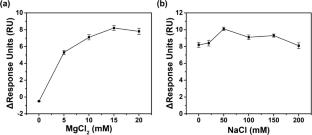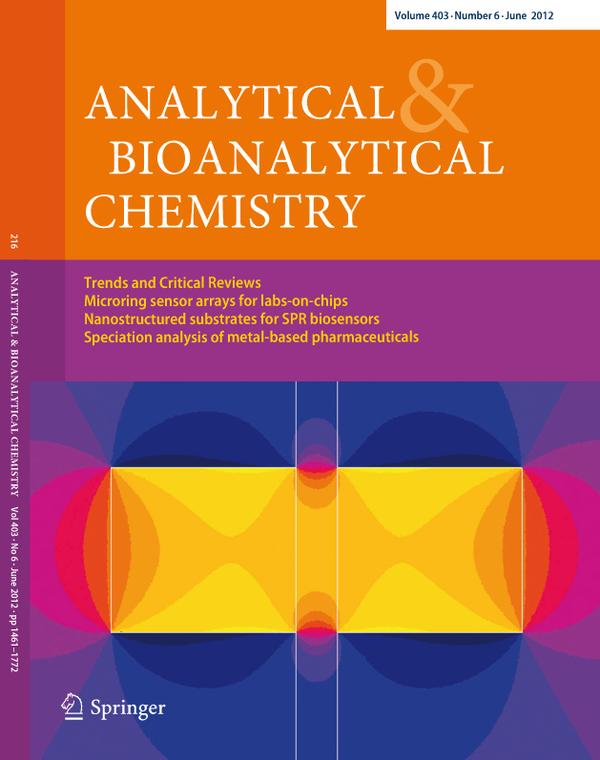Surface plasmon resonance sensor for direct oxytetracycline detection with a newly selected aptamer
Abstract
The overuse of tetracycline antibiotics can lead to its residue in the aquatic ecological environment and subsequently cause risks to human health through the food chain. Therefore, effective determination of oxytetracycline (OTC) residues is urgently needed. In this study, a simple and direct aptamer-based surface plasmon resonance (SPR) sensor has been fabricated and applied for selective and sensitive detection of the antibiotic OTC by using the newly reported short aptamer for OTC. Biotinylated aptamers were immobilized on the surface of a SPR chip functionalized with streptavidin. When OTC bound to its aptamer, the refractive index of the SPR chip changed, and the SPR signal response increased. The SPR chip could be regenerated by simply flowing the running buffer without the need for an additional regeneration solution. We found that a high density of aptamer immobilized on the SPR chip allowed for an enhanced SPR response to OTC. This aptamer SPR sensor had a wide dynamic range of 1.56 nM to 3.2 µM for OTC detection with a detection limit of 3.6 nM. This SPR sensor can be reused and shows high stability. This method demonstrated good specificity towards OTC and enabled us to detect OTC in diluted lake water, showing applicability for OTC detection in practical applications.
Graphical Abstract


 求助内容:
求助内容: 应助结果提醒方式:
应助结果提醒方式:


